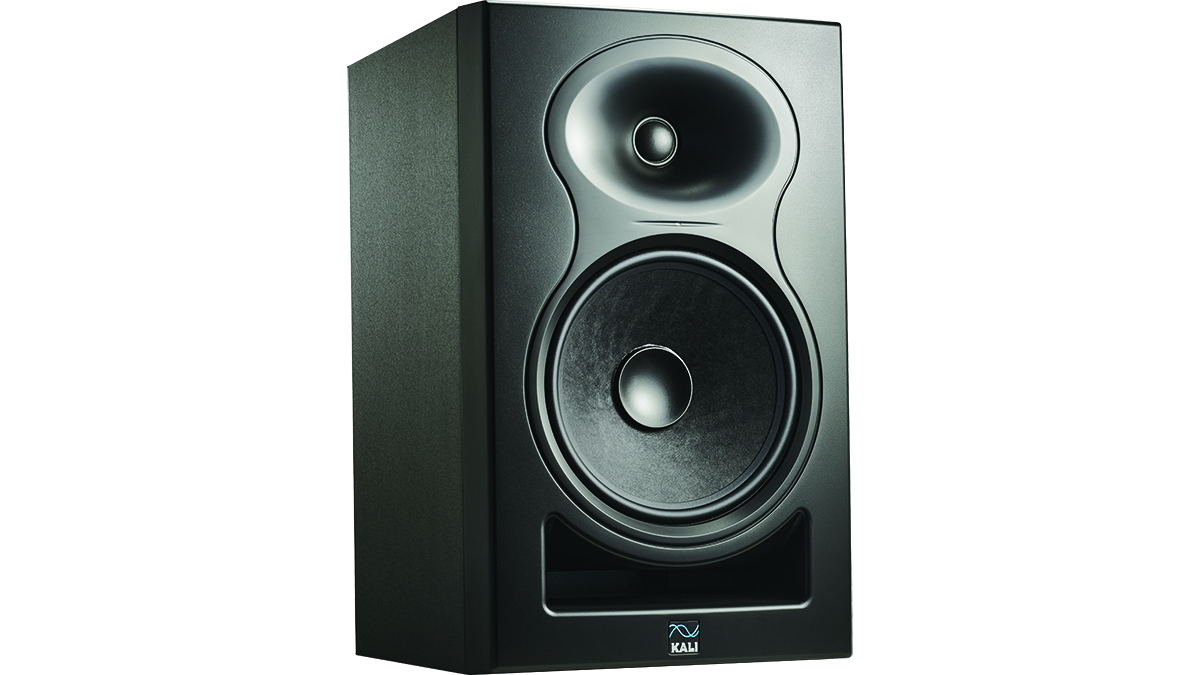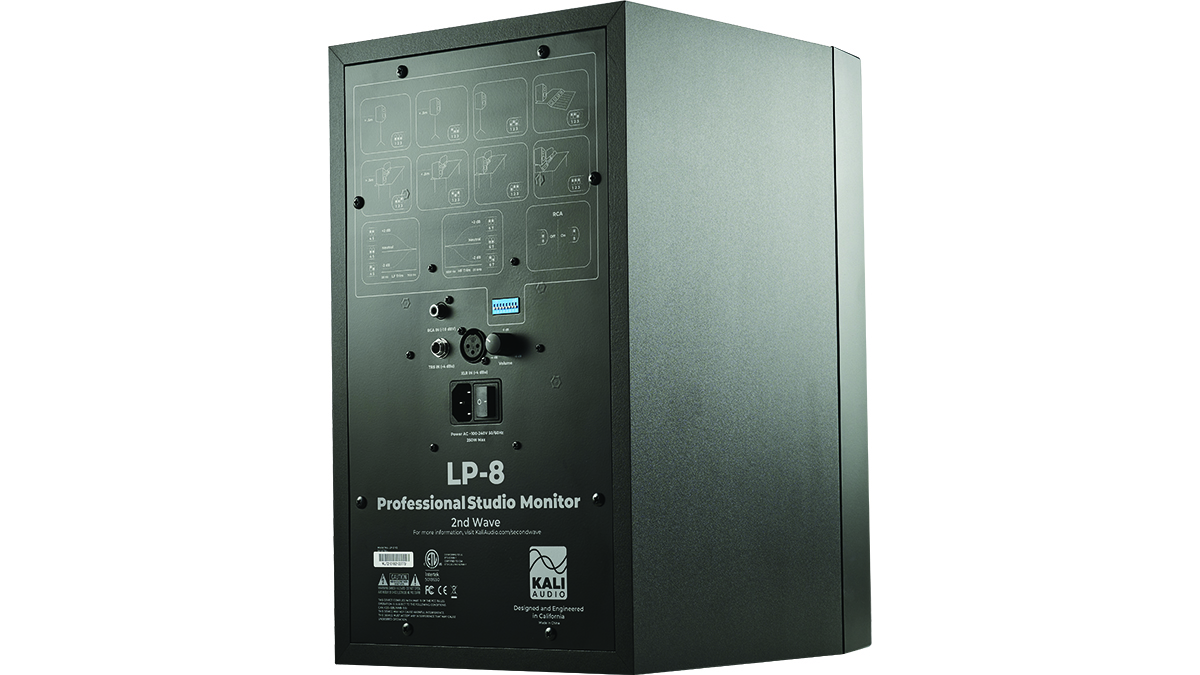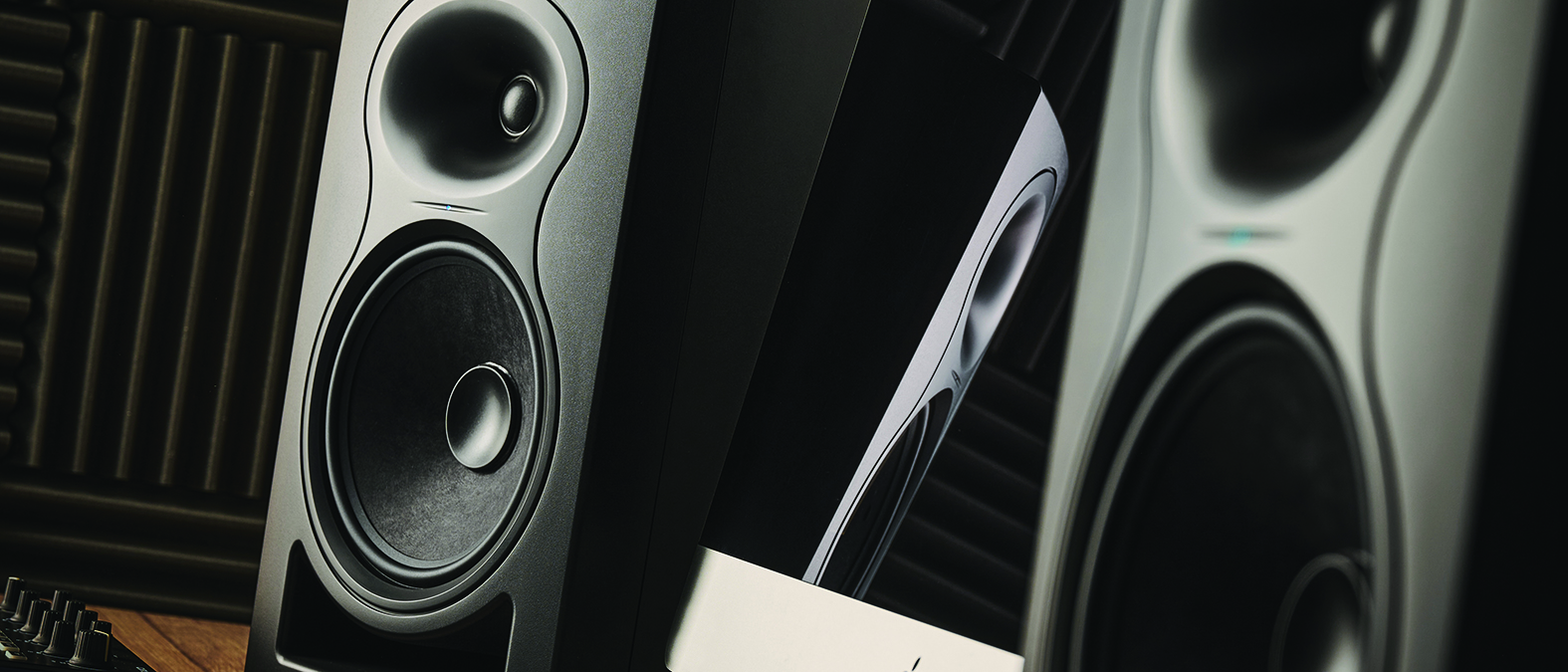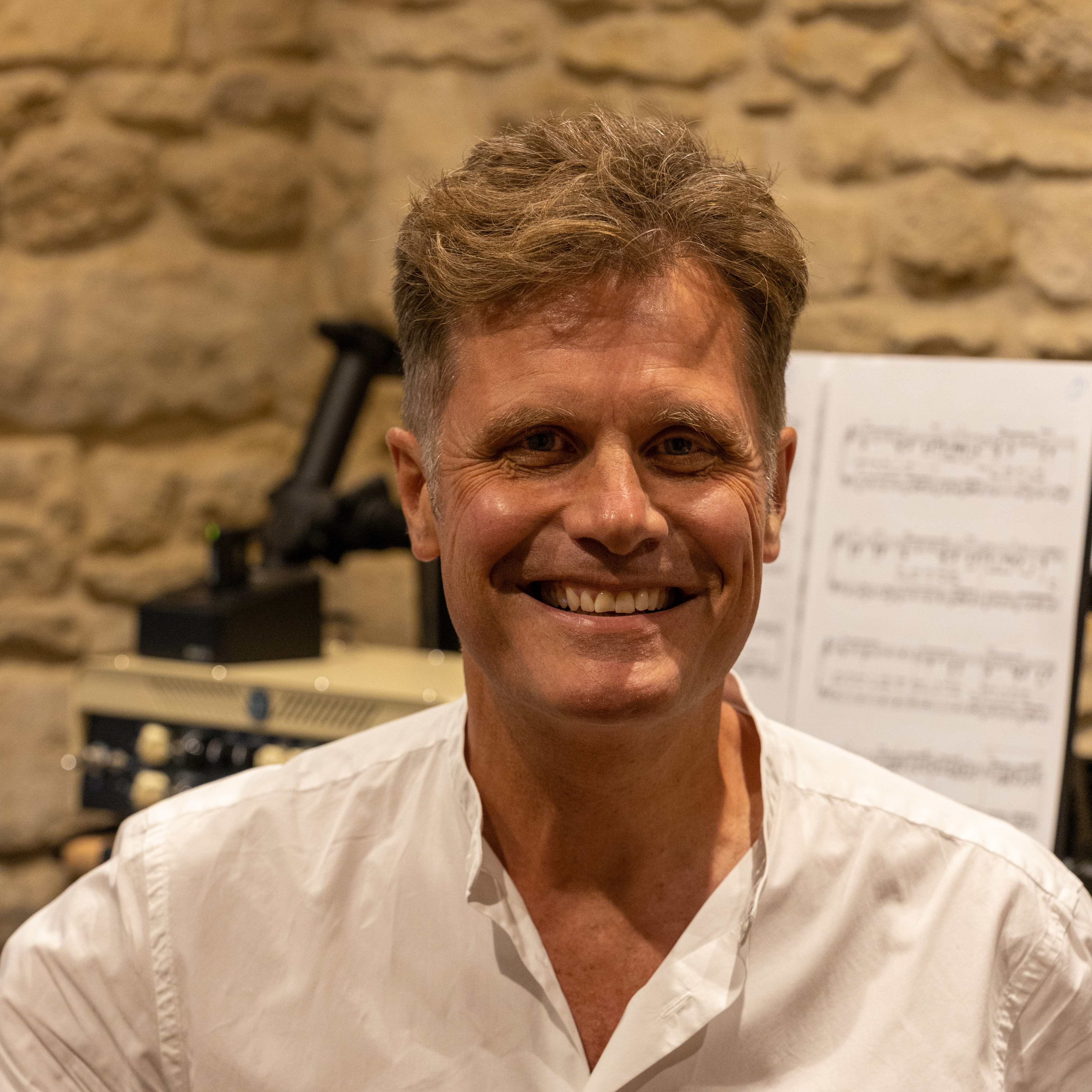MusicRadar Verdict
The LP-8 is super quiet, accurate and won’t colour your mix. However, the cheaper LP-6 is almost as good overall.
Pros
- +
Excellent value. Only the plastic faceplate cheapens the look, but then looks really aren’t everything.
- +
Self-noise and distortion were already good, but now better. Accurate sound with little to no character is perfect for mixing.
- +
Comprehensive boundary EQ settings enable easy placement in a variety of room types.
Cons
- -
Kali’s LP-6 offers almost as much for a fraction less money.
- -
Setting the boundary EQ is a little fiddly, but we’re nit-picking.
MusicRadar's got your back
Kali Audio LP-8 Second Wave: What is it?
So impressed were we with Kali Audio’s second-gen LP-6 monitor, we found it hard to fault on performance or price. Its bigger brother, the LP-8 (the LP stands for Lone Pine), boasts a very similar spec but costs a little more, so which should grace your studio?
First, a recap of our earlier LP-6 review. Both monitors are reboots of Kali’s original LP series, hence the tag ‘Second Wave’, also a nod to the two sound waves found in the logo.
These updated monitors use a new Class D amplifier platform that provides a 12dB reduction in noise, thin paper woofer cones for a faster transient response and robust DSP for smoother, accurate high frequencies. Kali also uses an oversized, high-output, dual-layer voice coil, specifically to cut distortion. Not everything is new, the 1-inch tweeter remains the same, as does the wide front port that has already earned a great reputation for its lack of extraneous noise.
The LP-8’s enclosure is made from medium density fibreboard (MDF) wrapped in textured vinyl, just like its smaller sibling. The front panel, our biggest bugbear, is a big slab of plastic that’s functional, yet betrays the LP-8’s budget origins.

Kali Audio LP-8 Second Wave: Performance and verdict
So, what does it sound like? Is a pair worth the extra expense over the LP-6s? Setup is easy thanks to the multiple inputs – TRS, XLR and RCA – and its generous number of boundary EQ options, configurable on the back panel. We played a variety of tracks through both sets of monitors, including our own solo acoustic guitar, piano, synth, bass and drum tracks via Logic Pro 10.8. We also listened to complete songs from artists as diverse as Beyoncé, Artemas and Teddy Swims, with a smattering of KankyoōOngaku (Japanese ambient).

Kali’s mantra for these products appears to be ‘more accuracy, less distortion’ which, to my ear, is bang on. The LP-8 is near silent when powered up, but with nothing playing through it (the low-level hiss of some budget nearfield monitors drives me to distraction). Start playback and the result is super clean. That’s not to say there’s no warmth to bass or mids, but no frequency is accentuated over another, and the entire spectrum is very articulate.
In fact, both the LP-6 and LP-8 share near identical frequency response curves, which are almost flat from 50Hz to upwards of 15kHz, with a slight dip at around 700-900Hz. The LP-8 does have a slightly lower bottom end frequency response at 37Hz vs 39Hz, and a half percent improvement in total harmonic distortion, which stands at 2.5% at 94dB at 1 metre. The LP-8 is also 20W more powerful than the LP-6.
So, for the extra cash, the LP-8 boasts improvements over its little sister, but they’re hardly significant. Either monitor will suit smaller rooms too, as neither is particularly large. The LP-8 is a fine monitor, but if it’s a touch too expensive, there’s no shame in investing in a pair of LP-6s and saving up for Kali’s WS-6.2 sub.
MusicRadar verdict: The LP-8 is super quiet, accurate and won’t colour your mix. However, the cheaper LP-6 is almost as good overall.
Kali Audio LP-8 Second Wave: Hands-on demos
Kali Audio
Inside Audio
Steve Kinney
Kali Audio LP-8 Second Wave: Specifications
- KEY FEATURES: Amp class: D HF Power: 40W LF Power: 60W Total Power: 100W HF Driver: 1-Inch Textile Dome LF Driver: 8-Inch Optimized Paper Freq Response (-10 dB): 37Hz - 25kHz Freq Range (±3 dB): 45 Hz-21kHz Max SPL: 117dB Enclosure: Front Ported.
- CONTACT: Kali Audio
When Simon's childhood classical guitar teacher boasted he 'enjoyed a challenge', the poor man had no idea how much he'd underestimated the scale of the task ahead. Despite Simon's lack of talent, the experience did spark a lifelong passion for music. His classical guitar was discarded for an electric, then a room full of electrics before Simon discovered the joys of keys. Against all odds, Simon somehow managed to blag a career as a fashion journalist, but he's now more suitably employed writing for MusicRadar and Guitar World. When not writing or playing, he can be found terrifying himself on his mountain bike.
“Excels at unique modulated timbres, atonal drones and microtonal sequences that reinvent themselves each time you dare to touch the synth”: Soma Laboratories Lyra-4 review
“I used everything I knew about music”: How Green Day exceeded expectations with their most ambitious song
YouTube just added AI tools that makes musicians, library music and video editors redundant














